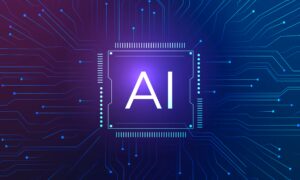Cryptocurrency mining has long been a game of numbers and algorithms, but with the rise of generative AI technology, the landscape is being completely transformed. In this blog post, we delve into innovative strategies that are revolutionizing the way cryptocurrencies are mined. Join us as we explore how generative AI is reshaping the future of cryptocurrency mining and opening up exciting new poss ibilities for miners around the world.
Intro to Generative AI and Cryptocurrency Mining
Cryptocurrency mining is a process that involves verifying and adding transactions to the blockchain, which is the digital ledger that records all crypto transactions. This process requires powerful computing resources and consumes a significant amount of energy, making it expensive and unsustainable in the long run.
However, with the emergence of generative artificial intelligence (AI), traditional cryptocurrency mining methods are being transformed. Generative AI refers to computer systems or algorithms that can create new content or generate solutions without explicit human input. In the context of cryptocurrency mining, generative AI can be used to optimize energy consumption, reduce costs, and increase profitability.
One way in which generative AI is transforming cryptocurrency mining is through its ability to analyze vast amounts of data in real-time. The complex algorithms used in crypto mining require constant monitoring and adjustments to ensure optimal performance. With generative AI, this process becomes more efficient as it can quickly analyze market trends and make necessary changes to improve mining operations.
Moreover, generative AI can also identify patterns in the market and adjust computing power accordingly. This eliminates manual interventions by miners who have to constantly monitor prices and adjust their resources accordingly. As such, miners benefit from increased productivity while reducing operational costs.
Another innovative strategy that incorporates both generative AI and cryptocurrency mining is genetic algorithm-based optimization techniques. These techniques use evolutionary principles to find the most efficient combination of computing resources for crypto-mining tasks. By continuously generating different combinations of hardware configurations based on predefined criteria such as price-performance ratio or energy efficiency, this approach minimizes manual intervention while maximizing profits.
Understanding the Role of AI in Cryptocurrency Mining
Cryptocurrency mining is the process of verifying and adding transactions to a blockchain network, in order to earn rewards in the form of newly created digital coins. This has traditionally been accomplished through brute force computing power, with miners using specialized hardware known as ASICs (Application Specific Integrated Circuits) to solve complex mathematical puzzles.
However, in recent years, there has been a growing interest in exploring the use of artificial intelligence (AI) for cryptocurrency mining. AI-powered mining offers several potential advantages over traditional methods, including improved efficiency, reduced costs, and increased flexibility.
So how exactly does AI fit into the world of cryptocurrency mining? One key role that AI can play is in optimizing hash rates, which refer to the speed at which a miner can solve these complex algorithms. By using machine learning algorithms to analyze data from previous mining attempts and adjust accordingly, AI can help miners achieve higher hash rates and thus increase their chances of successfully adding a block to the blockchain.
In addition to optimization, AI can also improve energy usage in mining operations. Traditional mining requires massive amounts of electricity to power ASICs and keep them cool. However, by implementing intelligent algorithms that automatically adjust power consumption based on current market conditions and other factors, miners can significantly reduce their energy costs.
Another crucial aspect that AI brings to cryptocurrency mining is its ability to adapt quickly to changing market conditions. As any seasoned miner knows, profitability in this industry depends heavily on factors such as network difficulty level and coin prices. With deep learning algorithms constantly analyzing these variables and adjusting strategies accordingly, miners can stay ahead of competition and capitalize on opportunities more effectively.
Moreover, generative adversarial networks (GANs), a subset of AI techniques used for creating new data instances based on existing ones without explicit programming instructions offer another exciting advantage for cryptocurrency miners. GANs have already shown promise in generating fake images or videos indistinguishable from real ones but are now being explored for generating realistic synthetic data for use in blockchain network simulations. This can significantly speed up research and development efforts in the cryptocurrency field, as miners can quickly test and validate new strategies without risking actual transactions on a live network.
The Evolution of Generative AI in Cryptocurrency Mining: A Historical Perspective
Cryptocurrency mining has undergone significant changes in recent years, largely due to the incorporation of generative artificial intelligence (AI) technologies. This has revolutionized the way digital currencies are mined, making it faster, more efficient, and ultimately more profitable for miners. To fully understand the impact of generative AI on cryptocurrency mining, it is important to examine its evolution from a historical perspective.
In the early days of cryptocurrency mining, it was a relatively simple and straightforward process. Miners would use their computer’s processing power to solve complex mathematical algorithms in order to verify transactions on the blockchain network and receive newly minted coins as a reward. However, with the rise in popularity of cryptocurrencies like Bitcoin, competition among miners increased significantly and traditional methods became inefficient.
This led to the development of Application-Specific Integrated Circuit (ASIC) devices specifically designed for mining cryptocurrencies. These devices had specialized hardware that could perform calculations much faster than traditional computers, greatly increasing efficiency and leading to an arms race among miners.
With time, even ASICs became less effective as computing power continued to increase and difficulties in solving complex algorithms heightened. This is where generative AI made its entrance into cryptocurrency mining. By utilizing machine learning algorithms and data analysis techniques, generative AI can adapt and learn about different blockchains and their difficulty levels in real-time. This allows for more accurate predictions of future difficulties and adjustments in how they approach problem-solving.
Generative AI also introduced new strategies such as zero-knowledge proofs which allow miners to prove that they have solved complex equations without revealing any information about how they did so – ensuring security while also improving efficiency.
Another major shift brought about by generative AI is pool distribution. In this method, several miners collaborate together rather than competing against each other individually. Generative AI allocates work according to individual capabilities within the pool resulting in better optimization of resources and higher chances of success for each miner involved.
The integration of generation AI in cryptocurrency mining has also led to better scalability and energy efficiency. By constantly analyzing and adapting its approach, generative AI ensures that computing power is used efficiently, reducing the amount of energy consumed in the mining process.
Techniques Used by Generative AI in Cryptocurrency Mining
Cryptocurrency mining is a complex and competitive process that involves solving mathematical puzzles and verifying transactions on the blockchain to add new blocks and earn rewards in the form of cryptocurrency. With the rise of generative AI, traditional methods of cryptocurrency mining are being revolutionized. In this section, we will delve into the various techniques used by generative AI in cryptocurrency mining.
1. Genetic Algorithms:
Genetic algorithms (GA) are a subset of generative AI that apply principles from natural selection and genetics to solve complex problems. In cryptocurrency mining, GA is used to optimize the process by generating unique solutions based on past successful strategies. By constantly re-evaluating and adapting its approach, GA can improve efficiency and maximize rewards.
2. Reinforcement Learning:
Reinforcement learning (RL) takes a trial-and-error approach to problem-solving by rewarding or punishing actions based on their outcomes. This technique is particularly useful in cryptocurrency mining as it allows generative AI to adapt to changing market conditions while seeking optimal strategies for maximizing rewards.
3.Cross-Chain Mining:
Cross-chain mining is a concept where multiple cryptocurrencies are mined simultaneously, leveraging their individual strengths and minimizing weaknesses. Generative AI algorithms can analyze different blockchains, identify profitable coins, and switch between them seamlessly depending on market conditions.
4.Genetic Programming:
Similar to genetic algorithms, genetic programming (GP) uses principles of evolution to generate code that can improve over time through generations of trial-and-error experiments. GP can be applied in a wide range of tasks including optimizing reward functions for maximum profitability in cryptocurrency mining.
5.Random Matrix Theory:
Random matrix theory (RMT) is used for portfolio optimization in traditional finance but has recently gained attention for its potential application in cryptocurrency trading strategies as well as cross-chain mining strategies. It uses statistical measures such as eigenvalues and eigenvectors of large matrices associated with financial data to identify patterns that could help improve returns.
6.Swarm Intelligence:
Swarm intelligence (SI) mimics the behavior of collective systems such as birds, ants, or bees to solve complex problems. In cryptocurrency mining, SI algorithms can work together to explore and optimize different strategies for maximum profitability.
Real-Life Examples and Success Stories of Generative AI in Cryptocurrency Mining
One of the earliest real-life examples of using generative AI in cryptocurrency mining is the Kepler Cryptocurrency Project. Founded in 2013, this project aimed to use deep learning algorithms to optimize the mining process for various cryptocurrencies such as Bitcoin, Ethereum, Litecoin, and more. The team behind Kepler utilized advanced generative modeling techniques to continuously analyze market data and identify profitable opportunities for mining. Through their efforts, they were able to achieve 30-50% higher returns compared to traditional methods.
Another successful example is the Golem Network – a decentralized supercomputer powered by blockchain technology. Golem uses generative AI algorithms to efficiently allocate resources from its network of computers for tasks such as rendering CGI graphics or conducting scientific simulations. By utilizing idle computing power from its users’ devices, Golem provides a cost-effective alternative for high-performance computing needs while also rewarding users with their native cryptocurrency token.
Additionally, there are numerous success stories from small-scale miners who have adopted generative AI-based strategies to improve their profits. One noteworthy example is that of Minnesota-based miner Joe Richards who used an AI-powered strategy developed by Stanford University researchers called Gradient Start Algorithm (GSA). This approach proved highly effective in reducing energy consumption while simultaneously increasing hashing rates (speed at which miners solve complex mathematical equations) resulting in significant savings on electricity costs.
Furthermore, established players in the industry have also started incorporating generative AI into their operations with remarkable results. For instance, Bitmain – one of the largest manufacturers of Bitcoin mining equipment – announced its plans to launch a new generation of machines equipped with self-learning chip technology. These chips use generative AI algorithms to continuously optimize mining efficiency, ensuring the highest possible yield at minimal costs for miners.
Innovative Strategies: How Generative AI is Disrupting Traditional Approaches to Cryptocurrency Mining
Generative AI refers to the use of artificial intelligence algorithms that can generate new and unique outputs based on a set of data inputs. In the context of cryptocurrency mining, generative AI technology is being utilized to analyze massive amounts of data from blockchain networks in real-time. By doing so, it can identify patterns, predict future trends, and make more accurate decisions about which cryptocurrencies to mine.
One key advantage of using generative AI in cryptocurrency mining is its ability to continuously adapt to changing market conditions. Unlike traditional manual methods that rely heavily on human expertise and decision-making, generative AI technology can learn from past data and adjust accordingly. This allows miners to remain competitive in an ever-evolving market.
Another innovative strategy made possible by generative AI is predictive maintenance. Maintaining hardware used for cryptocurrency mining such as high-performance computers (HPCs) or graphics processing units (GPUs) can be both time-consuming and costly. Generative AI algorithms are capable of monitoring these devices in real-time, detecting potential failures or malfunctions before they occur. This enables timely maintenance measures which ultimately leads to increased efficiency and reduced costs for miners.
Moreover, generative AI’s ability to analyze large amounts of complex data also plays a crucial role in optimizing energy consumption during the mining process. Traditional approaches often involve running HPCs at maximum capacity continuously, resulting in high electricity bills. Generative AI algorithms can monitor power usage in real-time and make adjustments based on current price fluctuations or network demands, ultimately decreasing energy costs for miners.
Aside from these advantages, the most significant disruption that generative AI brings to traditional approaches is its capability for autonomous decision-making. Generative AI algorithms can operate without human intervention, and in some cases, without any prior programming. This level of autonomy allows for more efficient and faster decision-making, enabling miners to capitalize on market opportunities as they arise.
Potential Impacts of Generative AI on Cryptocurrency Mining
The rise of generative artificial intelligence (AI) has been lauded as a game-changing technology in various industries, and cryptocurrency mining is no exception. With its ability to constantly learn from data and make autonomous decisions, generative AI has the potential to revolutionize the way cryptocurrency mining operations are conducted.
One of the main potential impacts of generative AI on cryptocurrency mining is its ability to optimize energy consumption. As cryptocurrencies become more mainstream and their value increases, the demand for mining them also grows. This results in an influx of miners competing for limited computing resources, leading to high energy consumption and operational costs. However, with generative AI algorithms that can adapt in real-time based on changing market conditions and transaction volumes, miners can efficiently manage their computing power to only use what is necessary at any given time. This can help reduce the overall energy consumption of cryptocurrency mining operations, making them more sustainable in the long run.
Furthermore, generative AI can also improve the efficiency of mining hardware by optimizing its performance through predictive maintenance techniques. By continuously monitoring hardware performance data and identifying patterns or anomalies that could lead to equipment failures or downtime, AI-powered systems can flag potential issues before they occur. This allows miners to take preventive measures such as repairing or replacing faulty components before they cause disruptions in the mining process.
Additionally, leveraging generative AI can also enhance security within cryptocurrency mining operations. The decentralized nature of cryptocurrencies makes them vulnerable to cyber attacks. However, with AI algorithms that continuously analyze network traffic patterns and identify suspicious activities, miners can detect and prevent malicious attacks quickly. Moreover, with its ability to learn from previous attack attempts and adapt accordingly, generative AI offers a level of defense against cybercriminals that manual security measures cannot match.
Conclusion
As the cryptocurrency market continues to evolve and expand, it is clear that generative AI has played a significant role in transforming how mining is approached. With its ability to adapt, optimize, and improve on traditional strategies, generative AI has opened up countless opportunities for investors and miners alike. By incorporating innovative techniques such as neuroevolution and reinforcement learning, the future of cryptocurrency mining looks promising and exciting. It will be fascinating to see how this technology further evolves and what new possibilities it unlocks in the world of digital currencies.































